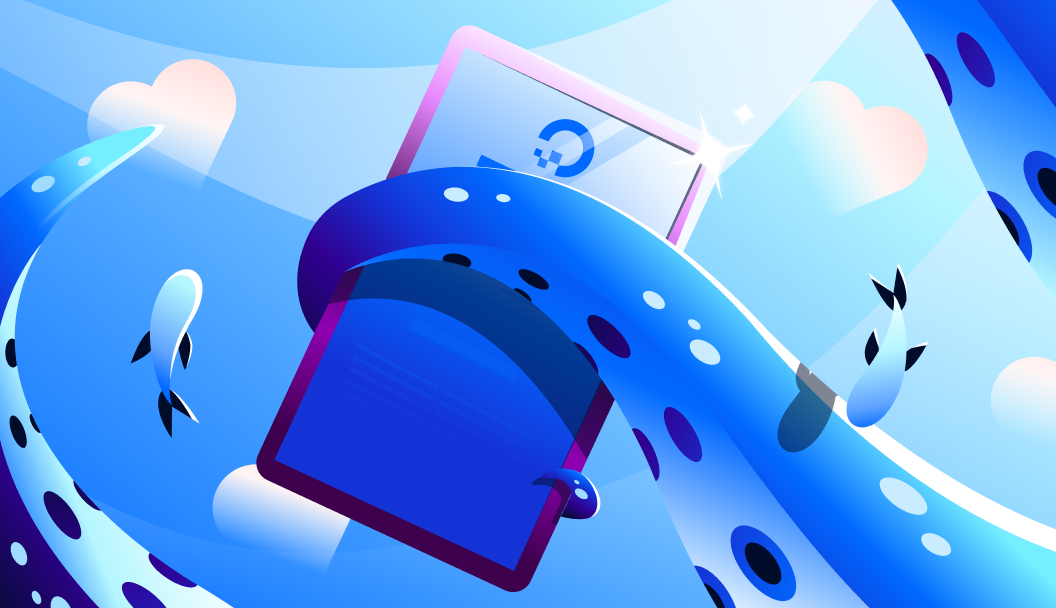.png)
Unlock the Power of Teamwork: Understanding Multiagent Systems and Their Applications
If one AI agent is powerful, imagine what a team of them could accomplish! Multiagent systems are revolutionizing how we approach complex problems by using multiple AI programs that work together. This collaborative AI approach is opening doors to possibilities we never thought possible.
DigitalOcean’s GenAI Platform offers a fully-managed service where businesses can build and deploy custom AI agents. With access to leading models, along with essential features like RAG workflows and guardrails, the platform makes it easier than ever to integrate powerful AI capabilities into your applications.
What Exactly Is a Multiagent System?
A multiagent system is a network of multiple AI agents working together to solve problems or complete tasks. Think of it as an AI dream team, where each member brings unique skills to the table.
- Individual Agents: Each agent has specific roles and functionality.
- Communication Framework: Allows agents to share information and coordinate actions.
- Control Structure: Manages the interaction and decision-making processes.
This collaborative setup allows you to break down complex problems into smaller, more manageable tasks. Instead of one monolithic AI trying to do everything, you have specialized intelligent agents combining their strengths.
Decoding the Inner Workings of a Multiagent System
Like human teams, multiagent systems rely on structured protocols to ensure smooth operations. These systems operate through three primary processes:
- Communication: Agents exchange messages about their status, share results, and request assistance using established protocols.
- Coordination: Managed through task allocation and scheduling to ensure clarity and prevent conflicts.
- Decision-Making: Can be centralized, with a lead agent making final calls, or decentralized, allowing agents to make autonomous decisions.
The true magic of agentic AI lies in its ability to handle the unexpected. Multiagent systems use negotiation protocols to find common ground when agents disagree. If an agent fails, tasks get redistributed, making the system resilient and reliable.
Diving Into the Different Flavors of Multiagent Systems
Multiagent systems come in various forms, each designed for specific collaboration and competition dynamics:
- Cooperative Systems: These systems emphasize teamwork, sharing information freely to achieve common goals.
- Competitive Systems: Agents pursue individual objectives, sometimes at the expense of others, requiring rules to maintain fair play.
- Mixed Systems: Blend cooperative and competitive elements to mirror real-world business dynamics.
- Hierarchical Systems: Introduce levels of authority, where senior agents oversee and coordinate junior agents for clear chains of command.
Real-World Examples of Multiagent Systems in Action
Multiagent systems have moved beyond research labs and are now being used in various industries:
- Supply Chain Optimization: Agents can handle demand forecasting, inventory management, and logistics planning, coordinating across networks to reduce delays and cut costs.
- Smart Manufacturing: AI agents manage equipment health, control quality, and coordinate workflows, improving overall operations.
- Financial Trading: Agents analyze market data, evaluate risks, and execute trades, processing vast amounts of data in real-time.
- Healthcare Coordination: Hospital systems use agents to manage bed assignments, coordinate staff schedules, and track equipment, optimizing resource allocation while maintaining quality of care.
- Customer Service Operations: Agents handle query processing, resolution tracking, and satisfaction monitoring, providing faster, more consistent support.
Navigating the Challenges of Using Multiagent Systems
While potent, multiagent systems present some challenges:
- Resource Management: Requires massive computing power to run multiple AI agents simultaneously.
- Communication Overhead: Agents need reliable, low-latency communication channels to coordinate.
- Knowledge Consistency: Keeping information synchronized across multiple agents can be difficult.
- Safety and Control: Agents may make conflicting decisions without proper guardrails.
- Integration Complexity: Integrating agents with existing systems often requires significant development effort.
Addressing these challenges starts with choosing the right foundation for the multiagent system.
Build With DigitalOcean's GenAI Platform
DigitalOcean’s GenAI Platform streamlines the process of building and deploying AI agents without needing to manage complex infrastructure. The managed service provides access to leading models and features for creating AI/ML applications:
- RAG workflows for building agents that reference your data
- Guardrails for creating safer, on-brand agent experiences
- Function calling capabilities for real-time information access
- Agent routing for handling multiple tasks
- Fine-tuning tools to create custom models with your data
Take advantage of AI and machine learning at DigitalOcean to access everything you need to build, run, and manage the next groundbreaking innovation.
.png)

.png)

.png)
.png)
.png)
.png)
.png)
.png)
.png)
.png)
.png)
.png)
.png)
.png)
.png)
.png)
.png)
.png)
.png)
.png)